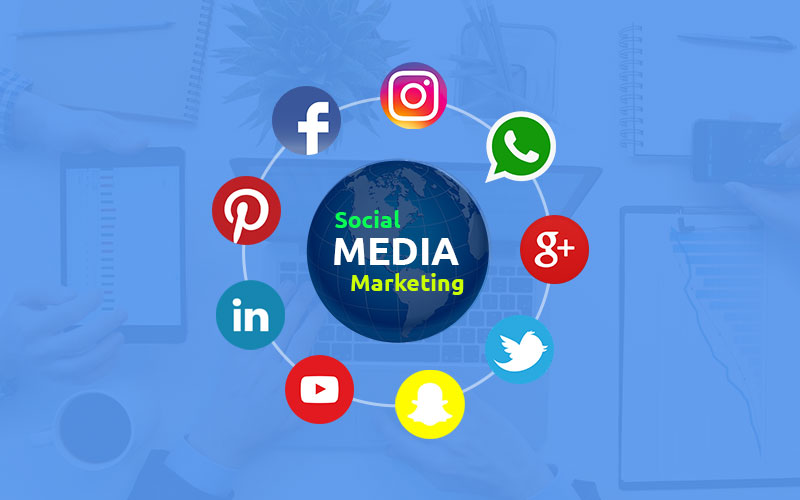In today’s digital world, social media marketing has become one of the most powerful tools for businesses to grow their brand, increase visibility, and engage with their target audience. With billions of people across platforms like Facebook, Instagram, Twitter, LinkedIn, and TikTok, businesses have unprecedented opportunities to connect with potential customers, build brand loyalty, and drive sales. However, with the sheer volume of content being shared, standing out from the crowd can be challenging. In this article, we’ll explore effective tactics to help you master social media marketing, boost engagement, and ultimately grow your brand.
Key Takeaways:
- Set Clear Goals: Establish specific, measurable goals to track your progress and success.
- Know Your Audience: Create detailed buyer personas to tailor your content to the right audience.
- Consistency is Key: Post regularly and at optimal times to maintain engagement and visibility.
- Engage Authentically: Respond to comments and interact with your audience to build meaningful relationships.
- Monitor Performance: Use analytics to assess the effectiveness of your strategies and optimize your approach.
1. Define Your Social Media Goals
Before jumping into social media marketing, it’s essential to set clear, measurable goals. These goals will guide your efforts and help you understand how well your strategies are performing. Clear goals help ensure your efforts are aligned with business objectives and make it easier to track progress and evaluate results. Common social media goals include increasing brand awareness, driving website traffic, generating leads or sales, improving customer engagement, and strengthening brand loyalty. Using the SMART framework (Specific, Measurable, Achievable, Relevant, Time-bound) for goal-setting ensures that goals are actionable and realistic. Regularly review your goals and adjust based on performance.
2. Know Your Audience
Understanding who your audience is and what they want is crucial to crafting successful social media strategies. A deep understanding of your target audience allows you to create content that resonates with them and fosters engagement. Tailored content is more likely to spark interactions, which can lead to a higher return on investment (ROI). Start by creating detailed buyer personas to represent your ideal audience segments. Use social media analytics to gain insights into the demographics, behaviors, and interests of your followers. Engaging with your followers directly through comments, DMs, or polls is another great way to learn more about their needs and preferences.
3. Choose the Right Social Media Platforms

Not all social media platforms are the same, and each one attracts a unique audience. Selecting the platforms that align with your brand’s goals and target audience is key to a successful social media strategy. For example, Instagram is great for visually-driven content and engaging younger audiences, while Facebook works well for building communities and reaching a diverse range of people. Twitter excels for real-time updates and short interactions, while LinkedIn is ideal for B2B marketing and professional networking. TikTok is highly effective for creating viral content and reaching Gen Z. Instead of spreading yourself too thin, focus on 2-3 platforms that align with your brand and audience.
4. Create Engaging and Relevant Content
Content is at the heart of social media marketing. Whether it’s a post, image, video, or live stream, creating content that captivates your audience is essential for driving engagement. Engaging content encourages interactions such as likes, comments, shares, and saves, which increases your visibility on social media platforms. Consistent, valuable content also builds brand loyalty and trust, making your audience more likely to convert into customers. Mix up your content to keep things fresh—incorporate blog posts, infographics, behind-the-scenes content, polls, stories, and videos. Focus on providing value, whether through education, entertainment, or inspiration. Be authentic and showcase your brand’s personality, which helps to foster a deeper connection with your audience.
5. Post Consistently and at Optimal Times
Consistency is key when it comes to social media marketing. Posting regularly keeps your brand top-of-mind for your followers, ensuring you stay engaged with your audience. Inconsistent posting can result in your brand being forgotten or overlooked. Additionally, posting at optimal times can increase your reach and engagement. Each social media platform has peak times when its users are most active, and posting during these times improves your chances of being seen. Develop a content calendar to plan and schedule your posts in advance, ensuring that you’re consistently posting and maintaining a regular presence. Use social media management tools such as Hootsuite or Buffer to automate your posts and save time.
6. Leverage User-Generated Content (UGC)
User-generated content (UGC) refers to content that your customers or followers create and share related to your brand. UGC is an invaluable tool for social media marketing, as it fosters trust and authenticity. When your followers create content about your products or services, it acts as a form of social proof, showing potential customers that real people are enjoying your brand. Sharing UGC also helps build a community around your brand, making your audience feel more connected and engaged. Encourage your followers to create and share content by running contests, offering incentives, or simply asking them to share their experiences.
7. Engage with Your Audience

Social media is a two-way street. Engaging with your audience helps foster stronger relationships and builds brand loyalty. Responding to comments, answering questions, and interacting with followers through direct messages or live chats shows that you value their input and feedback. Responding quickly to inquiries or comments can also improve your customer service reputation. Social media is not just about broadcasting messages—it’s about creating meaningful conversations. Take the time to listen to your audience’s concerns, feedback, and suggestions, and engage with them authentically.
8. Use Hashtags Wisely
Hashtags are a powerful tool to increase the visibility of your posts and expand your reach. By using relevant and trending hashtags, you can expose your content to a broader audience that’s interested in those topics. However, it’s important not to overdo it. Using too many hashtags can make your posts look spammy and can reduce engagement. Research popular hashtags that are relevant to your industry or brand, and mix in some niche hashtags to target more specific audiences. Don’t forget to create a branded hashtag for your business to make it easier for customers to find and share your content.
9. Run Paid Social Media Ads
Organic reach on social media platforms has become increasingly limited due to algorithm changes, which is why paid social media ads are a great way to amplify your content. Running paid ads on platforms like Facebook, Instagram, or LinkedIn can help you reach a larger and more targeted audience. Social media platforms offer a range of ad formats, including image ads, video ads, carousel ads, and story ads. Paid ads allow you to target specific demographics, interests, behaviors, and even locations, ensuring your ads reach the right people. Test different ad creatives, copy, and targeting options to optimize your ads for better performance.
10. Track Your Analytics and Adjust Strategies
Social media marketing isn’t a “set it and forget it” endeavor. It’s essential to track your social media performance to understand what’s working and what’s not. Use the analytics tools provided by each platform (e.g., Facebook Insights, Instagram Analytics, Twitter Analytics) to monitor key metrics such as engagement rate, reach, impressions, and conversions. Analyzing your performance helps you identify trends, learn from past mistakes, and adjust your strategies accordingly. If certain types of content or posting times are performing better than others, use that data to refine your approach and make more informed decisions in the future.
Also Read : Mastering Digital Marketing: Strategies For Success In The Modern Era
Conclusion
Social media marketing is an indispensable tool for businesses looking to engage with their audience, build brand loyalty, and increase sales. By defining clear goals, understanding your audience, choosing the right platforms, and creating valuable, consistent content, you can successfully navigate the complexities of social media marketing. Engaging with your followers, using UGC, leveraging hashtags, and running paid ads are additional strategies that can further boost your results. Track your performance regularly and make data-driven adjustments to continue improving your social media presence. When done right, social media marketing can be a game-changer for your brand’s growth and success.
FAQs
- What is social media marketing?
Social media marketing involves using platforms like Facebook, Instagram, Twitter, and LinkedIn to promote your business, engage with customers, and build brand awareness through content and paid ads. - How do I define my social media goals?
Start by determining what you want to achieve, such as increasing brand awareness, driving traffic, generating leads, or improving engagement. Make your goals SMART (Specific, Measurable, Achievable, Relevant, and Time-bound) to track progress. - Which social media platform should I focus on?
The platform you choose depends on your target audience and business goals. Instagram and TikTok are great for visual and younger content, while Facebook is better for community building, and LinkedIn suits B2B businesses. - How can I create engaging content on social media?
To create engaging content, mix up your posts with videos, infographics, polls, behind-the-scenes content, and customer testimonials. Focus on providing value through education, entertainment, or inspiration. - Why is consistency important in social media marketing?
Posting consistently keeps your brand visible and maintains engagement with your audience. Regular content helps build trust and keeps your audience interested in your brand. - What is user-generated content (UGC) and why should I use it?
UGC refers to content created by your followers or customers, such as photos, reviews, or videos. It’s authentic and acts as social proof, helping to build trust and foster community around your brand. - How do I measure success on social media?
Track key metrics such as engagement rate, reach, impressions, website traffic, and conversions. Social media analytics tools provide insights into which content resonates with your audience and how your campaigns are performing.




